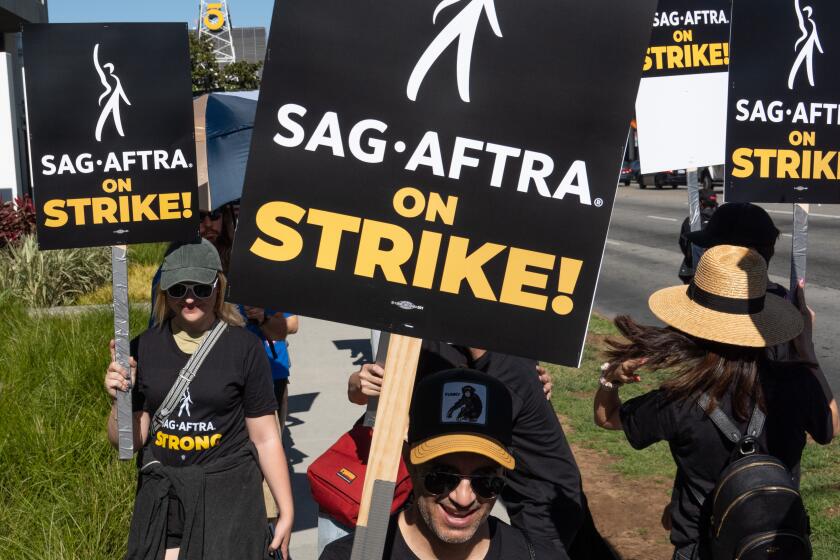Rates Heading Toward Big Test
The question of why long-term interest rates are where they are -- and not substantially higher -- has mystified many investors, economists and Federal Reserve governors for the last 18 months.
The housing market, by contrast, has been less befuddled than simply thrilled with relatively cheap long-term money in the face of the sustained credit-tightening campaign by the Fed.
But if long-term rates have been surprisingly low so far, the real test of their mettle lies just ahead.
Although the Fed signaled at its meeting last Tuesday that it might be nearly done raising short-term rates, the central bank also said in its post-meeting statement that “some further measured policy firming is likely to be needed.”
Many on Wall Street figure that means the Fed’s benchmark rate, now 4.25%, will rise to at least 4.75% by spring.
That might be no big deal, except for this: In the Treasury bond market, even the longest of long-term rates -- the annualized yield on 25-year T-bonds -- currently is below 4.75%.
So if the Fed lifts its rate to 4.75%, and bond yields stay subdued, investors face the prospect of earning less on longer-term securities than they would by keeping their money in very short-term, no-risk cash accounts, such as six-month T-bills.
That has happened periodically in the modern era, and it usually has meant one thing: Investors were convinced that interest rates in general soon would be coming down because the economy was poised for a sharp deceleration or a full-on recession.
Consider the rate outlook from the viewpoint of someone who might be thinking about putting money into bonds. To buy a 10-year Treasury note, which currently pays a yield of 4.44%, you’d have to believe that even if shorter-term rates climb above that level next year -- as the Fed seems to be warning -- they won’t stay there for long.
“The bond market is pricing in some event that would cause the Fed to cut rates” later in 2006, said Drew Matus, an economist at brokerage firm Lehman Bros. in New York.
That event, most likely, would be a marked economic slowdown.
If that’s what the bond market sees, it’s at odds with the outlook of many stock investors.
The stock market appears to have an upbeat view of the economy’s prospects next year. The blue-chip Standard & Poor’s 500 index hit a 4 1/2 -year high last week, and some broader indexes, including the New York Stock Exchange composite, hit record highs at midweek, although they eased Thursday and Friday.
It also could be that equity investors figure they could handle a softer economy if it meant that interest rates would drop. There has been little the market has liked better than falling rates, after all. Even so, if a recession is looming, the smart money would say that all stock bets would be off.
It may seem outlandish to even bring up recession, given the strength the economy has continued to show. If short-term interest rates will soon be higher than longer-term rates, however, the historical record says recession is a real risk.
Normally, long-term interest rates are higher than short-term rates, which makes sense. If you’re going to tie up your money for a lengthy period you would expect to be compensated for the risks that entails.
When short-term rates exceed long-term rates, an “inversion” is said to occur. The last one was in 2000: The Fed held its key rate at 6.5% in the second half of that year. But as the economy weakened, bond investors began to sense that the Fed soon would be easing credit. Long-term bond yields slid.
By the end of December 2000, the 10-year Treasury note yield was 5.11% -- about 1.4 percentage points below the Fed’s short-term rate.
The Fed began cutting its rate in January 2001, but it was too late. A recession began in March.
That has been par for the course, according to David Rosenberg, an economist at Merrill Lynch & Co. in New York. In the last three decades there have been five Fed-induced rate inversions, Rosenberg said.
“The economy slipped into recession a year later all five times,” he said.
This time around, however, no less than Fed Chairman Alan Greenspan himself has said that an interest-rate inversion might not signal an economic slowdown. The implication is that the bond market has its own special issues these days.
Greenspan, and many others, have mused about why long-term U.S. interest rates have been so remarkably tame while the Fed has boosted its short-term rate from 1% in June 2004 to the current 4.25%. In that same period the 10-year Treasury note yield actually has declined, from 4.58% to 4.44% now.
Some on Wall Street believe that demand for bonds has remained robust, keeping yields down, because of a global savings glut -- meaning that so much money is looking for a place to go that investors in effect are forced to out-compete one another for bonds, depressing returns.
Others see a “catastrophe markdown” in yields on government bonds: Rates stay low because many investors are permanently poised to rush into the securities as a haven should a disaster occur, such as a financial calamity or a massive terrorist attack.
Some analysts also contend that bond yields have softened because the market believes inflation has been vanquished in the long run, the jump in energy prices notwithstanding. Government bond returns have averaged 2.3 percentage points above the inflation rate since 1926. If inflation falls back to, say, 2%, a 4.44% bond yield would look fairly generous.
Still, if short-term rates rise above long-term rates in the first half of 2006, the only good reason to buy long-term bonds would be if you believed that all interest rates soon would be coming down.
If that’s your outlook, then it may well be time to think about locking in longer-term bond yields, at least for part of your fixed-income portfolio.
Of course, there’s another possibility here that every investor has to keep in mind: It could well be that the economy will stay strong, the Fed under new Chairman Ben Bernanke (who is expected to take over Feb. 1) will keep lifting short-term rates, and longer-term interest rates will rise as well, keeping an inversion from happening.
Under that scenario, investors obviously would be better off waiting to lock in bond yields at more attractive levels. And they’d be paid to wait, as yields on money market mutual funds and other cash accounts continue to rise.
David Greenlaw, an economist at brokerage Morgan Stanley in New York, believes the Fed’s benchmark rate will reach 5% in the second quarter, and will hold there through 2006.
If he’s right, we’re going to find out how hungry global investors really are to own long-term U.S. bonds at these yields.
*
Tom Petruno can be reached at tom.petruno@latimes.com. For recent columns on the Web, visit www.latimes.com/petruno.






